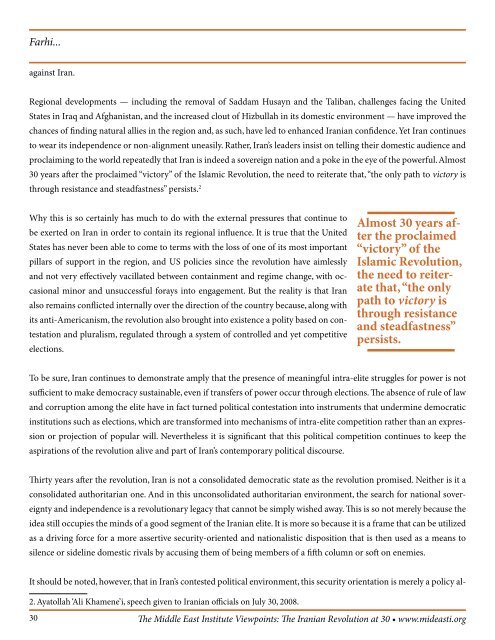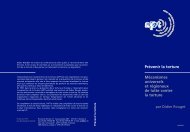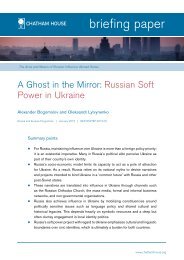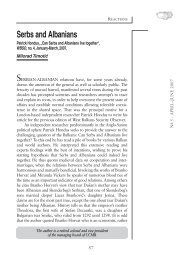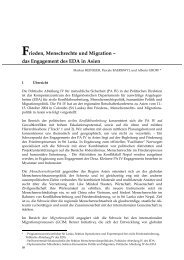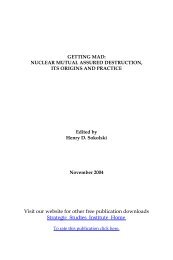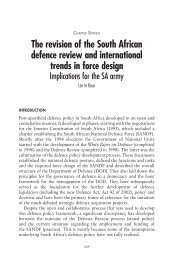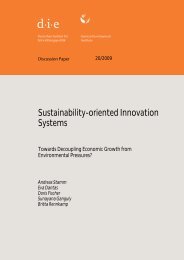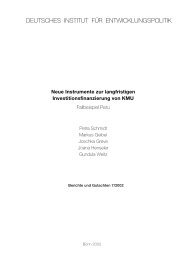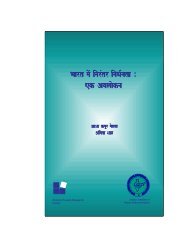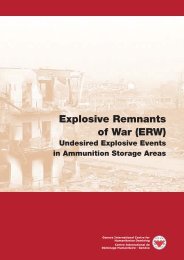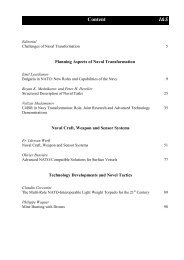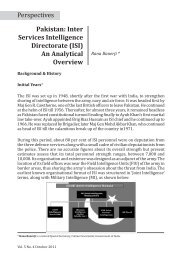The Iranian Revolution at 30
The Iranian Revolution at 30
The Iranian Revolution at 30
Create successful ePaper yourself
Turn your PDF publications into a flip-book with our unique Google optimized e-Paper software.
Farhi...<br />
against Iran.<br />
Regional developments — including the removal of Saddam Husayn and the Taliban, challenges facing the United<br />
St<strong>at</strong>es in Iraq and Afghanistan, and the increased clout of Hizbullah in its domestic environment — have improved the<br />
chances of finding n<strong>at</strong>ural allies in the region and, as such, have led to enhanced <strong>Iranian</strong> confidence. Yet Iran continues<br />
to wear its independence or non-alignment uneasily. R<strong>at</strong>her, Iran’s leaders insist on telling their domestic audience and<br />
proclaiming to the world repe<strong>at</strong>edly th<strong>at</strong> Iran is indeed a sovereign n<strong>at</strong>ion and a poke in the eye of the powerful. Almost<br />
<strong>30</strong> years after the proclaimed “victory” of the Islamic <strong>Revolution</strong>, the need to reiter<strong>at</strong>e th<strong>at</strong>, “the only p<strong>at</strong>h to victory is<br />
through resistance and steadfastness” persists. 2<br />
Why this is so certainly has much to do with the external pressures th<strong>at</strong> continue to<br />
be exerted on Iran in order to contain its regional influence. It is true th<strong>at</strong> the United<br />
St<strong>at</strong>es has never been able to come to terms with the loss of one of its most important<br />
pillars of support in the region, and US policies since the revolution have aimlessly<br />
and not very effectively vacill<strong>at</strong>ed between containment and regime change, with occasional<br />
minor and unsuccessful forays into engagement. But the reality is th<strong>at</strong> Iran<br />
also remains conflicted internally over the direction of the country because, along with<br />
its anti-Americanism, the revolution also brought into existence a polity based on contest<strong>at</strong>ion<br />
and pluralism, regul<strong>at</strong>ed through a system of controlled and yet competitive<br />
elections.<br />
To be sure, Iran continues to demonstr<strong>at</strong>e amply th<strong>at</strong> the presence of meaningful intra-elite struggles for power is not<br />
sufficient to make democracy sustainable, even if transfers of power occur through elections. <strong>The</strong> absence of rule of law<br />
and corruption among the elite have in fact turned political contest<strong>at</strong>ion into instruments th<strong>at</strong> undermine democr<strong>at</strong>ic<br />
institutions such as elections, which are transformed into mechanisms of intra-elite competition r<strong>at</strong>her than an expression<br />
or projection of popular will. Nevertheless it is significant th<strong>at</strong> this political competition continues to keep the<br />
aspir<strong>at</strong>ions of the revolution alive and part of Iran’s contemporary political discourse.<br />
Thirty years after the revolution, Iran is not a consolid<strong>at</strong>ed democr<strong>at</strong>ic st<strong>at</strong>e as the revolution promised. Neither is it a<br />
consolid<strong>at</strong>ed authoritarian one. And in this unconsolid<strong>at</strong>ed authoritarian environment, the search for n<strong>at</strong>ional sovereignty<br />
and independence is a revolutionary legacy th<strong>at</strong> cannot be simply wished away. This is so not merely because the<br />
idea still occupies the minds of a good segment of the <strong>Iranian</strong> elite. It is more so because it is a frame th<strong>at</strong> can be utilized<br />
as a driving force for a more assertive security-oriented and n<strong>at</strong>ionalistic disposition th<strong>at</strong> is then used as a means to<br />
silence or sideline domestic rivals by accusing them of being members of a fifth column or soft on enemies.<br />
It should be noted, however, th<strong>at</strong> in Iran’s contested political environment, this security orient<strong>at</strong>ion is merely a policy al-<br />
2. Ay<strong>at</strong>ollah ‘Ali Khamene’i, speech given to <strong>Iranian</strong> officials on July <strong>30</strong>, 2008.<br />
Almost <strong>30</strong> years after<br />
the proclaimed<br />
“victory” of the<br />
Islamic <strong>Revolution</strong>,<br />
the need to reiter<strong>at</strong>e<br />
th<strong>at</strong>, “the only<br />
p<strong>at</strong>h to victory is<br />
through resistance<br />
and steadfastness”<br />
persists.<br />
<strong>30</strong> <strong>The</strong> Middle East Institute Viewpoints: <strong>The</strong> <strong>Iranian</strong> <strong>Revolution</strong> <strong>at</strong> <strong>30</strong> • www.mideasti.org


